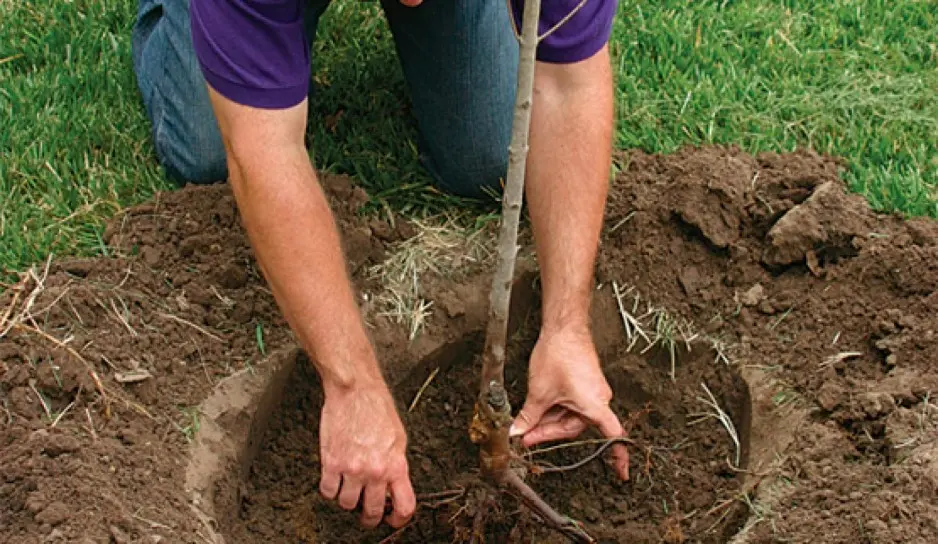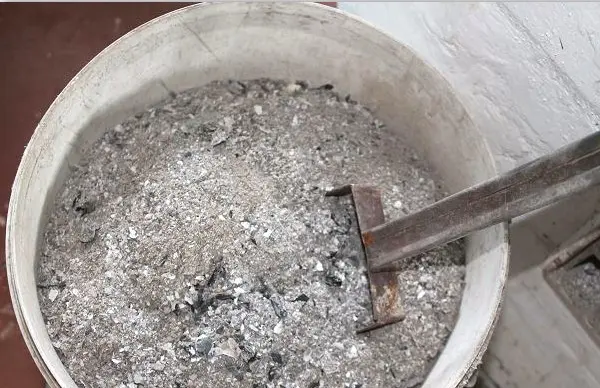Contents
- Advantages and disadvantages of the variety
- Video “Description of blackberry varieties”
- Planting of seedlings
- How to choose a place to land
- How to plant
- Watering mode
- Fertilizer and top dressing
- Tied bushes to trellis
- Harvesting
- Pruning and shaping the berry bush
- Preparing bushes for winter
- Video “Planting and caring for blackberries”
Blackberry giant gives a rich harvest of tasty, large and healthy berries. The fruiting process occurs from the end of July to the end of November. The shrub is very resistant to various diseases. It perfectly tolerates winter and low temperatures. Juicy ripe fruits are to the taste of both adults and children, which has a very positive effect on the body as a whole.
Advantages and disadvantages of the variety
The biggest advantage of this variety is its high yield. In addition, the fruits themselves have an excellent taste, they are sweet, juicy, with a slight pleasant sourness. This is the main description of the berries of this variety.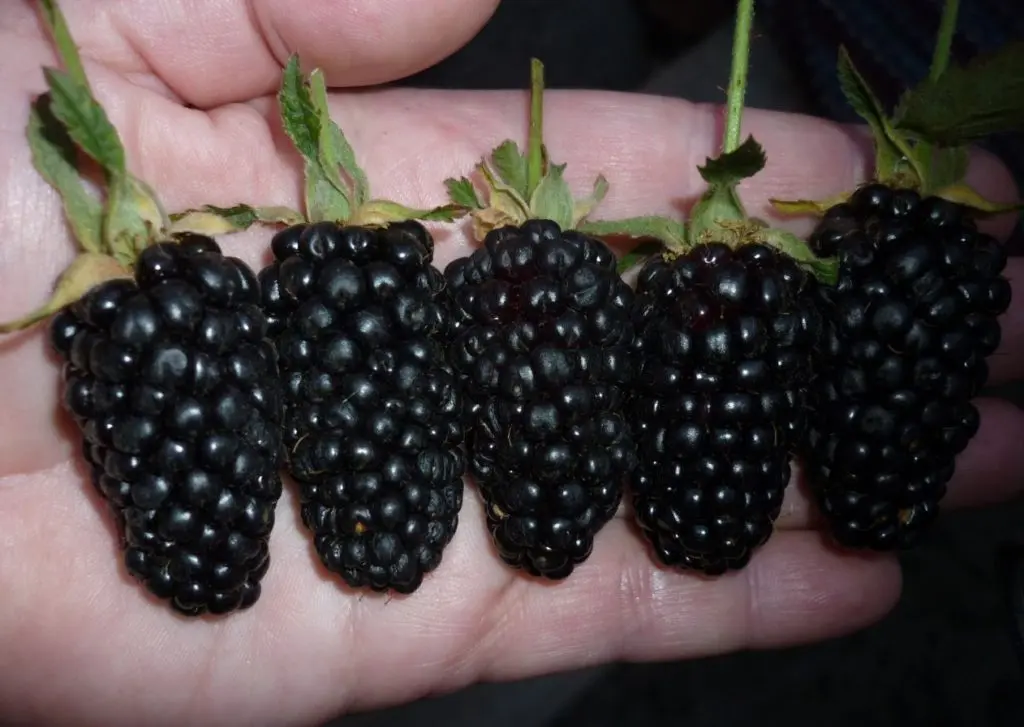
Sometimes this variety is confused with the Bedford giant, which has thorny shoots that spread along the surface of the earth. A distinctive feature of the English Bedford is the size of the berry, it is smaller and weighs about 7 grams. The Giant variety has a ripe berry weight of about 20 grams. They have a glossy rich black color and a slightly wonderful elongated shape.
The fruits are enriched with calcium, iron and sulfur, which has a positive effect on the body, metabolic processes and general condition.
An important plus is the temperature endurance of -30 degrees, which implies a good wintering.
The disadvantage of the shrub of this variety is the poor tolerance of lack of moisture in the soil. This can kill the plant and make it difficult to breed in dry areas.
Video “Description of blackberry varieties”
From the video you will learn a description of the most popular blackberry varieties.
Planting of seedlings
In order to choose the right seedlings, you should pay attention to the following things:
- The main roots should not be less than 2-3 pieces.
- The length of the root system of the seedling is not shorter than 15 centimeters.
- The height of the main shoot and the aerial part in height should be 40 centimeters.
- This variety is planted in the spring (March to May), although the seedlings are moved to the ground in the fall (early September).

How to choose a place to land
Like each variety, blackberries have their own characteristics when planting and choosing the most optimal place. The shrub is photophilous and, with sufficient lighting, chicly bears fruit with delicious fruits of gigantic size.
It is important to know that this blackberry variety does not like too wet soil and therefore wetlands are not suitable for planting it. The main moisture of blackberries is necessary at the first stages of growth, when shoots grow intensively and a crop is formed. This is usually between April and July. It is best to plant a bush in drained loams with weak or neutral acidity (pH 5,5 – 6,5).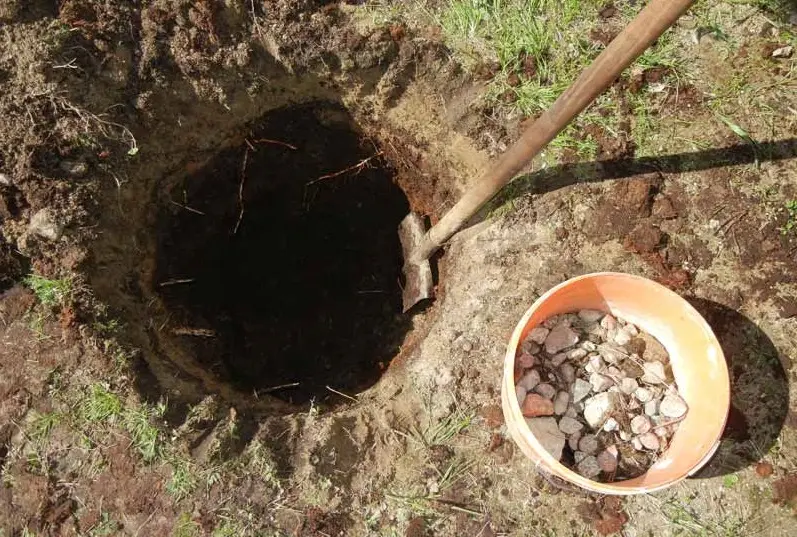
The place should be low wind, but at the same time with good access to sunlight.
To prepare the soil, it is first dug up by 50 cm and organic and mineral fertilizers are applied. If the soil is clayey, add sand and peat in small quantities. If the soil contains a significant amount of limestone, then this can lead to yellowing of the leaves.
How to plant
For a competent landing, they dig a trench or a hole measuring 40×40 cm. Two-thirds of the recess is filled with fertile soil. Also, 5-6 kg of compost or humus, 30 g of superphosphate, 20 g of potassium salt or 30 g of wood ash are added to each pit. After that, seedlings are planted.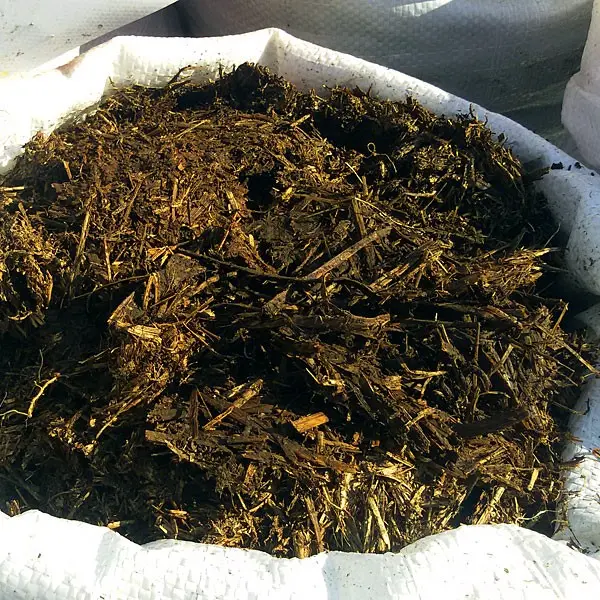
If the soil is too acidic, add a little lime to it.
In case of drying of the roots, they are first placed in water for an hour. The resulting mixture of fertilizer is mixed with the top layer of soil and poured into a hole, where this variety of berries is planted after.
In the process of sprinkling the roots, they should be carefully straightened to avoid bending and creases. The maximum length of the location of growth buds should be no more than 2-3 cm. When digging, it is necessary to slightly shake the earth with fertilizer to avoid voids, the earth is compacted along the perimeter of the root system.
Watering mode
Watering the Giant variety is carried out every week. During flowering and ripening of berries, the shrub needs to receive a regular amount of moisture. Given that the roots of the variety are located deep enough in the ground, at least one bucket of water should be used per bush.
It should be noted that this variety can tolerate drought, much better than raspberries, but the number of fruits will be reduced and their size will be smaller than with sufficient watering.
Fertilizer and top dressing
Feed this blackberry variety in the spring until flowering. During this period, the fertilizer consists of the following components:
- ash;
- humus or compost;
- nitroammophoska;
- urea.

In autumn, this variety is best fertilized with phosphorus and potassium. Thanks to these components, the shrub is better prepared for wintering, and also help the plant strengthen its protective capabilities to resist external factors.
Tied bushes to trellis
For garter bushes, you can use two methods:
- The first way is to shorten the shoots that have grown to 15 cm from the height of the first wire. In winter or spring, eight of the strongest seedlings are selected and tied to a trellis, all the rest are removed. After two years, the shoots are cut out.
- The second method involves tying the shoots of this variety without pruning. They are cut when they have reached three meters in height or have joined nearby shrubs. Young shoots cover the ground at this time.
Harvesting
The collection is carried out in several approaches, and the fruits are plucked as they ripen. The berry itself breaks off with the fruit, which is edible. This is done carefully so as not to damage or crush the berry. The fruits of this variety are stored well, because they are quite elastic.
Pruning and shaping the berry bush
In order to properly prune this blackberry variety, weak, underdeveloped shoots are eliminated in the fall. If you remove the upper part of the shoots by 30 centimeters, the shrub will endure the winter better.
Also, the pruning procedure can be carried out in the spring, after experienced cold weather. Then the “diseased” and damaged branches are removed. The same is done with the diseased parts of the shrub. So that the “infection” does not spread to healthy and strong branches and does not harm the plant as a whole. Without fail, the side branches are shortened in the spring, leaving only a dozen buds.
Preparing bushes for winter
Even taking into account that the blackberry variety tolerates low temperatures well and the winter period in general, it is better to cover the bush. To do this, all the shoots of the variety are laid on the ground and covered with agrofiber. In addition, you can cover the bush with roofing material or sprinkle with sawdust, wide corn leaves, humus. This will help to better tolerate temperature fluctuations and avoid rotting.
Trimming the tops also helps blackberries better endure the winter cold period. Blackberries of this variety are very unpretentious in care, frost-resistant, can tolerate drought, and the fruits themselves are tasty and very healthy. It is not difficult to store berries, and they can delight all year round with their taste and vitamin composition.
Video “Planting and caring for blackberries”
From the video you will learn how to properly plant and care for blackberries.










